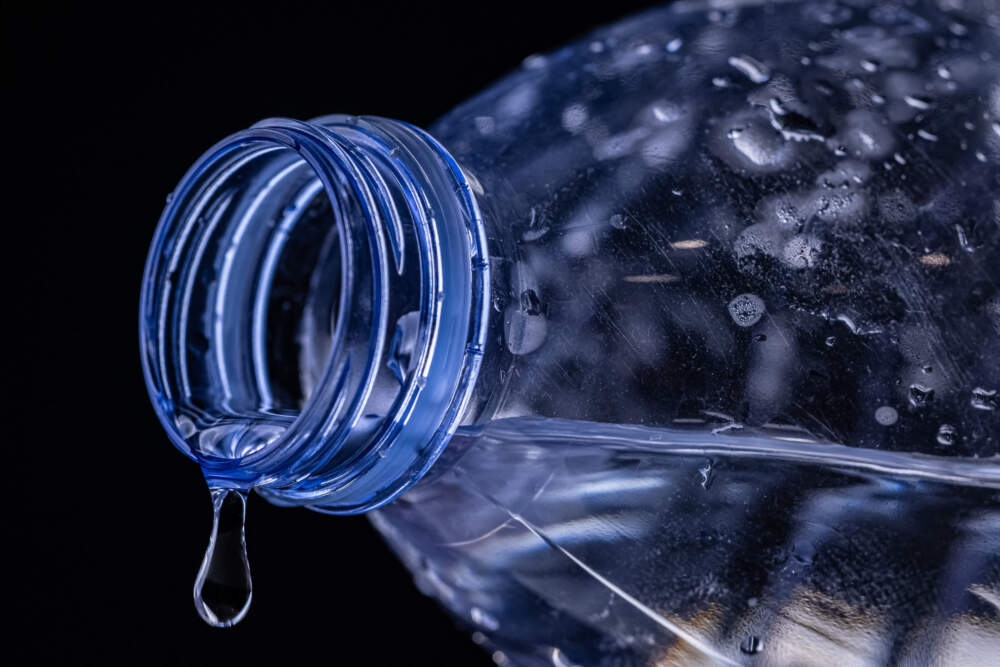Advertisement
Plastic bottles shed invisible nanoplastics, study finds
Resume
Plastic bottles are not only piling up in our landfills and oceans. Research shows they also shed invisible plastic particles that end up in our bodies.
A new study found that a one-liter bottle of water contains about 250,000 invisible nanoplastic particles. The study from Columbia and Rutgers universities was published in Proceedings of the National Academy of Sciences this week.
When scientists first detected microplastics, they suspected the presence of even smaller particles. It took time to develop a tool that could identify nanoplastics given their size, says associate professor of pharmacology and toxicology at Rutgers University Phoebe Stapleton, who worked on the study.
Microplastics are about the size of a grain of sand — and nanoplastics are 1,000 times smaller than that, she says.
A team at Columbia University developed a technique called stimulated Raman scattering that uses two lasers to identify the size and chemistry of the particle. Researchers looked at three brands of bottled water and found differences in what type of plastic had the highest percentage in each one, Stapleton says.
“One, it was pretty clear that those plastics came from the bottling or the capping process itself from that part, because the plastics were the same type of chemistry. However, the other two brands were not the same type of chemistry as that bottle or the cap itself,” she says. “So it's likely they were introduced not from the bottling, but from an earlier source within the bottling process, whether that's the filter or possibly the water that came in to start.”
Tiny nanoplastics are small enough to bypass water filters, Stapleton says. Instead of catching the particles, water filters could start to introduce them, though more research is needed.
Scientists are finding nanoplastics everywhere they look; A study published this week found the particles in nearly all proteins in the U.S.
“Depending on the safety of your tap water, I know many communities have had issues with lead recently and bottled water is clearly going to be safer,” Stapleton says. “However, if you're looking to reduce your plastic consumption, then a refillable water bottle like aluminum or glass might be a better option for you.”
Researchers don’t know the impact of nanoplastics entering the human body yet. The particles have been found to bypass barriers protecting the lungs and the gastrointestinal system as well as in the human placenta, lung tissue and blood, Stapleton says.
“The problem with the plastics is that they may contain some chemicals that are known endocrine disruptors,” she says. “They may also [do] what's called adsorb or add different chemicals from their life before they got into the body. So those additions could also change the toxicity of that particle being somewhere that it shouldn't be.”
Opening and closing the cap repeatedly, sunlight and changes and temperature can increase the shedding of nanoplastics in a reusable plastic water bottle — so glass or metal are better options, Stapleton says.
“I would ditch plastic reusable water bottles,” she says.
Adeline Sire produced and edited this interview for broadcast with Micaela Rodriguez. Allison Hagan adapted it for the web.
This segment aired on January 12, 2024.